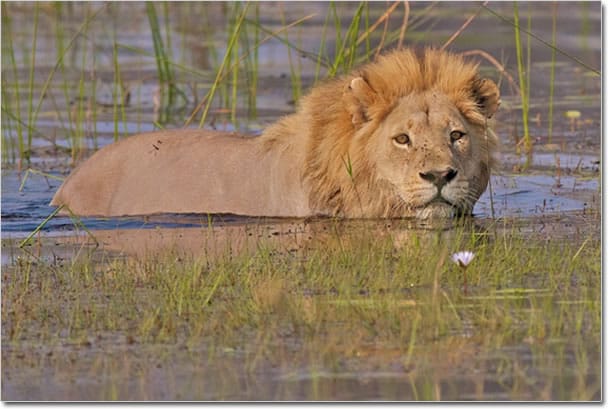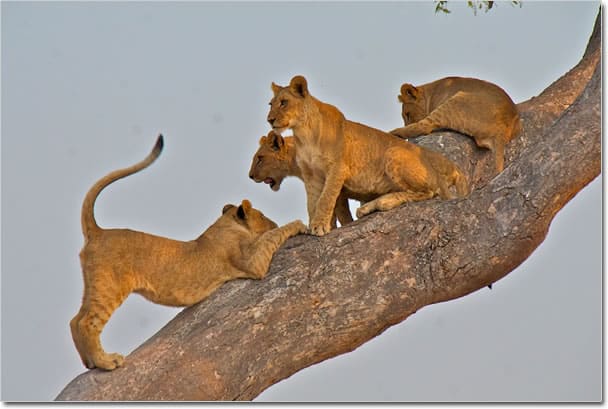
Mapula Lions as Elephant Hunters
We frequently plan safaris to Botswana for our clients, and the interaction between Elephants and Lions can fascinating there.
First the three Mapula Boys were found feeding on an elephant that appeared to be around six years old. Four days later the lions were again found feeding on another elephant of similar size and age near the Mapula Lodge airstrip. Hunts and kills have not been witnessed yet but the scenes definitely appeared to be fresh kill sites and the spacing of time would be a normal interval between kills.
Lions in the Savute area of Botswana became legendary during the 1990’s for their specialization of hunting elephants during the dry season as a means to support their super pride of 30 plus lions.
Why Elephants?
Lions are cultural feeders and quite often prides will learn to specialize on certain prey species, typically the most commonly available large prey item in their territory. With the exception of the Savute pride elephants have never been more than an anomaly as a prey species with the odd sick or vulnerable individual taken opportunistically by lions. The Savute situation was unique as the area became very dry leading to low densities of prey species during the dry season and elephants were forced to come to a select few waterholes. With the large numbers in the pride it was most efficient to focus on this reliable source of sizeable prey. The lions mostly succeeded with hunting elephants between 4 and 10 years of age. Those younger than 4 tend to be in such close quarters with their mothers that it is difficult to gain an advantage and over 10 they simply become so large and strong that success rates drop considerably. The age and size of the Mapula elephant feedings again supports that they are learning to exploit elephants as targeted prey.

What’s potentially fascinating is the conditions at Mapula could not be more different than Savute of the 1990’s. The Mapula area of the Okavango Delta has become inundated with high waters and there are two large buffalo herds that are the typical prey base for the Mapula lions, as well as ample amounts of other plains species.
However, with the increasing water levels of the last two years Mapula has also become a favored location for elephants and we often joke saying ‘is this Mapula or is this Chobe’ (Chobe is famed for having tens of thousands of elephants near the riverfront in the dry season). Recent clients to Mapula commented that there are more elephants than impala. Even last January, during the green season when ample water is available in the mopane woodlands and elephants usually spread out, it felt like running an elephant gauntlet on game drives through the Mapula concession as they seemed to be everywhere.
If the Mapula pride is developing into elephant hunters it seems to be driven simply by pure abundance. As the elephants are dense and widely distributed it may be less work than tracking the buffalo with swimming channels to keep up.
One other factor could be the Mapula pride is growing. After more than a year of just being the three boys and two females they now have had two litters of cubs. Certainly buffalo are sufficient to support this very average pride size but with more mouths to feed perhaps it spurned on an attempt to try out this unknown potential prey item that is being seen everywhere.
With just two adult females in the pride, and them gone for periods having cubs, these males often have had to hunt for themselves and they are very good hunters but they need to focus on large species that they can take down with brute force as stealth approach for faster plains game is not as efficient for them.
Dicks and I will continue to record these events and if the Mapula pride does develop into full on elephant hunters it will make for an interesting study that can be contrasted with what happened in Savute under such different conditions.